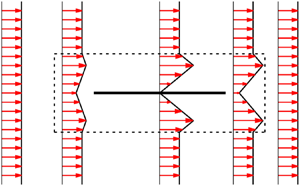Article contents
Bound on the drag coefficient for a flat plate in a uniform flow
Published online by Cambridge University Press: 04 August 2020
Abstract

The background method has been a successful tool in obtaining strict bounds on global quantities such as the rate of energy dissipation and heat transfer in turbulent flows. However, all applications of this method until now have focused on flows confined between solid boundaries. An important class of problems that, by contrast, has received no attention is the class of external flows, i.e. flow past a body. In this context, obtaining the dependence of the drag coefficient on the Reynolds number is of crucial relevance for many engineering applications. In this paper, we consider the classical problem of flow past a flat plate of finite length at zero angle of incidence and use the background method to obtain a bound on the drag coefficient. Assuming a statistically steady state and appropriate far-field decay rates for the flow variables, we show that at large Reynolds numbers, the drag coefficient ( $C_D$) is bounded by a constant, a bound that is within a logarithmic factor of experimental data.
$C_D$) is bounded by a constant, a bound that is within a logarithmic factor of experimental data.
- Type
- JFM Papers
- Information
- Copyright
- © The Author(s), 2020. Published by Cambridge University Press
References
REFERENCES
- 6
- Cited by


